The last three years have forced health systems to realign services; first, to address the demands of COVID-19 and later to meet pent-up demand for care, all while addressing community health needs, competitive positioning and right-sizing of services. With the pandemic as a catalyst, today's healthcare market is increasingly influenced by new business models aimed at delivering superior healthcare experiences. Healthcare is seeing a rapid shift to consumer-centric care models — fundamentally changing how healthcare systems compete for market share and revenue. Is your health system constantly asking: Are there service lines that we should add or remove? Are there physician groups that we should align with? Are there hospitals with which we should align? Should we add a new facility or program based on the shift of procedures to outpatient? Strategic planning is vital for revenue growth. But what do you need to know to get there? To truly understand and move your market position, ...
